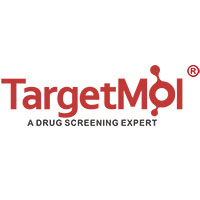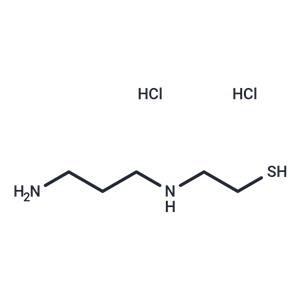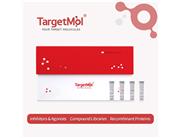| Name | Amifostine thiol dihydrochloride |
| Description | Amifostine thiol dihydrochloride (WR 1065) can activate p53 through a JNK-dependent signaling pathway. It also protects normal tissues from the toxic effects of certain cancer drugs. |
| Cell Research | For Western analysis, cells are treated with 1 mM WR-1065 for 24 h, and subconfluent cultures of cells are harvested and lysed in RIPA buffer supplemented with protease inhibitors. Protein concentrations are determined by a detergent-compatible assay. Western blots are blocked and incubated in antibody in PBS/0.2% Tween 20/5% nonfat dry milk. Blots are incubated with 1 μg/mL antibody for 1 h at room temperature, followed by washing in PBS/0.2% Tween 20 and incubation in peroxidase-conjugated secondary antibody and chemiluminescence detection [2]. |
| Animal Research | Seventy-two rats are divided randomly into 9 equal groups: 1) Control group receives no injection and is left untreated for the entire period of the experiment as intact animals; 2) Sham-operated group is subjected only to surgical procedure; 3) Vehicle (saline)-treated group receives 2 μL saline (Intra-SNc); 4) Lesioned group receives 6-hydroxydopamine; 5) Vehicle+6OHDA group receives saline as a vehicle 3 days once daily (2 μL/rat) before 6-OHDA injection; 6 to 8) Rats in these groups are pretreated with Intra-SNc injection of WR-1065 (20, 40 and 80 μg/2 μL/rat) 3 days before 6-OHDA injection; 9) Non-lesioned animals receive intra-SNc injection of WR-1065 dihydrochloride (80 μg/2 μL/rat) for three days [3]. |
| In vitro | The DNA-binding activity is increased in a WR-1065 concentration-dependent manner. Cells treated with 1 mM WR-1065 dihydrochloride for 24 h revealed that all of the p53-induced genes analyzed are transactivated following WR-1065 dihydrochloride treatment, in a p53-dependent manner. Significantly, treatment with WR-1065 dihydrochloride leads to a 3-fold increase in luciferase expression driven by AP-1 and a 5-fold increase when this reporter gene is driven by NF-κB when these values are normalized to the level of the cotransfected β-galactosidase gene [2]. |
| In vivo | WR-1065 attenuates the severity of 6-OHDA-induced catalepsy when compared with 6-OHDA-lesioned rats. Also, it has been observed that WR-1065 dihydrochloride improves catalepsy in a dose-dependent manner. Pretreatment with three different doses of WR-1065 dihydrochloride (20, 40, and 80 μg/2 μL/rat) for 3 days before 6-OHDA administration, significantly elevates SOD activity and restores it to normal range compare with 6-OHDA lesioned rats [3]. |
| Storage | Powder: -20°C for 3 years | In solvent: -80°C for 1 year | Shipping with blue ice. |
| Solubility Information | DMSO : 24 mg/mL (115.85 mM), Sonication is recommended.
H2O : 100 mg/mL (482.72 mM)
|
| Keywords | Amifostine thiol | WR-1065 | Amifostine thiol dihydrochloride | Inhibitor | MDM-2/p53 | Amifostine thiol Dihydrochloride | WR1065 | inhibit |
| Inhibitors Related | Rotenone | Indole-3-carbinol |
| Related Compound Libraries | Bioactive Compound Library | Ubiquitination Compound Library | Metabolism Compound Library | Anti-Aging Compound Library | Bioactive Compounds Library Max | Anti-Cancer Active Compound Library |

 United States
United States



